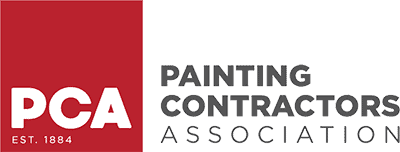Are you looking to give your interiors a fresh look without breaking the bank? DIY interior painting is an excellent way to breathe new life into your rooms, but achieving that professional finish requires more than just picking a color. Mastering essential painting techniques can make all the difference. Ready to roll up your sleeves? Let’s dive into how you can elevate your DIY interior painting project with some game-changing tips and tricks.
Key Takeaways:
- Choosing the Right Tools: Essential for precision and efficiency.
- Preparation is Key: Clean walls, fix imperfections, and tape correctly.
- Paint Mixing and Application: Ensure consistency and a flawless finish.
- Advanced Techniques: Create unique textures and effects.
- Finishing Touches: The importance of second coats, clean-up, and final inspections.
Choosing the Right Tools for the Job
Before you even open a can of paint, let’s talk tools. Selecting the right brushes and rollers can set the stage for a successful project.
Brushes:
- Angled Brushes: Ideal for edges and trim work. They provide better control for detailed areas.
- Flat Brushes: Perfect for painting larger areas and achieving a smooth finish on flat surfaces.
Rollers:
- Short Nap Rollers: Best for smooth walls and surfaces.
- Long Nap Rollers: Designed for textured or rough surfaces, ensuring paint reaches all the nooks and crannies.
Additional Tools:
- Paint Trays and Liners: Essential for easy paint application and clean-up.
- Drop Cloths: Protect your floors and furniture from paint splatters.
Essential Prep Work: Setting the Stage
Preparation might seem tedious, but it’s a crucial step that will pay off with a flawless finish.
- Cleaning Your Walls: Dust and dirt can prevent paint from adhering correctly. Use a mild detergent and water to clean the walls, then let them dry completely.
- Fixing Imperfections: Inspect your walls for cracks, holes, and imperfections. Fill them with spackle or joint compound, and sand smooth once dry. This creates a flawless surface for painting.
- Taping Off Areas: Use painter’s tape to protect areas you don’t want painted, such as baseboards, windows, and door frames. Proper taping ensures clean, sharp lines and minimizes paint bleed.
Mixing Paint Like a Professional
A smooth, even finish starts with well-mixed paint. Here’s how to mix like a pro:
- Stir Thoroughly: Blend the paint using a wooden stirrer or a paint mixer attachment. Stir in a circular and up-and-down motion to ensure an even distribution of pigments.
- Check Consistency: Ensure there are no lumps or clumps in the paint. A well-mixed paint will spread evenly and provide consistent color.
Painting Techniques Every DIYer Should Know
Achieving a professional look involves more than just applying paint. Here are some techniques to perfect your DIY project:
Feathering for Smooth Transitions:
- How to Do It: Gently lift the brush at the end of each stroke to blend colors seamlessly. This technique is perfect for creating gradient effects or blending different shades.
The ‘W’ or ‘V’ Technique:
- How to Do It: Paint a ‘W’ or ‘V’ shape on the wall with your roller, then fill the gaps with parallel strokes. This method helps distribute the paint evenly and avoids streaks.
Dabbing for Texture:
- How to Do It: Use a sponge or stippling brush to dab paint onto the surface, creating texture. Experiment with different tools and pressures for various effects.
Advanced Painting Techniques to Elevate Your Project
Ready to take your DIY interior painting skills to the next level? Try these advanced techniques:
Sponging for Unique Effects:
- How to Do It: Dab a lightly paint-soaked sponge onto the wall to create a mottled texture. Adjust paint amount and pressure for different effects.
Creating Crisp Lines:
- How to Do It: Apply painter’s tape along the edges for sharp lines. Remove the tape while the paint is slightly wet to prevent lifting.
Dry Brushing for a Distressed Look:
- How to Do It: Use a brush with minimal paint to lightly drag across the surface, highlighting textures and creating a vintage charm.
Finishing Touches: Ensuring a Professional Finish
Your DIY interior painting project isn’t complete until you’ve tackled these final steps:
- Applying a Second Coat: A second coat deepens the color and ensures uniform coverage. Allow the first coat to dry completely before applying the second.
- Cleaning Up Like a Pro: To extend the lifespan of brushes and rollers, clean them thoroughly. Use warm, soapy water and mineral spirits for oil-based paints.
- Final Inspection: Inspect your work for missed spots or uneven areas once dry. Touch up as needed and carefully peel off painter’s tape.
Turn Your Vision into Reality With Home Perspective Painting
Mastering these DIY interior painting techniques can transform your space from ordinary to extraordinary. With the right tools, preparation, and techniques, you’ll achieve a professional look that reflects your style and creativity. Remember, practice makes perfect!
If you need a little extra help or if your project feels like a bit too much to handle on your own, Home Perspective Painting & Staining is here to assist. Our team of experts can help you bring your vision to life with precision and ease.
Ready to elevate your interior? Contact us at 772-261-9133 for a free estimate, and let’s make your home transformation a reality!

